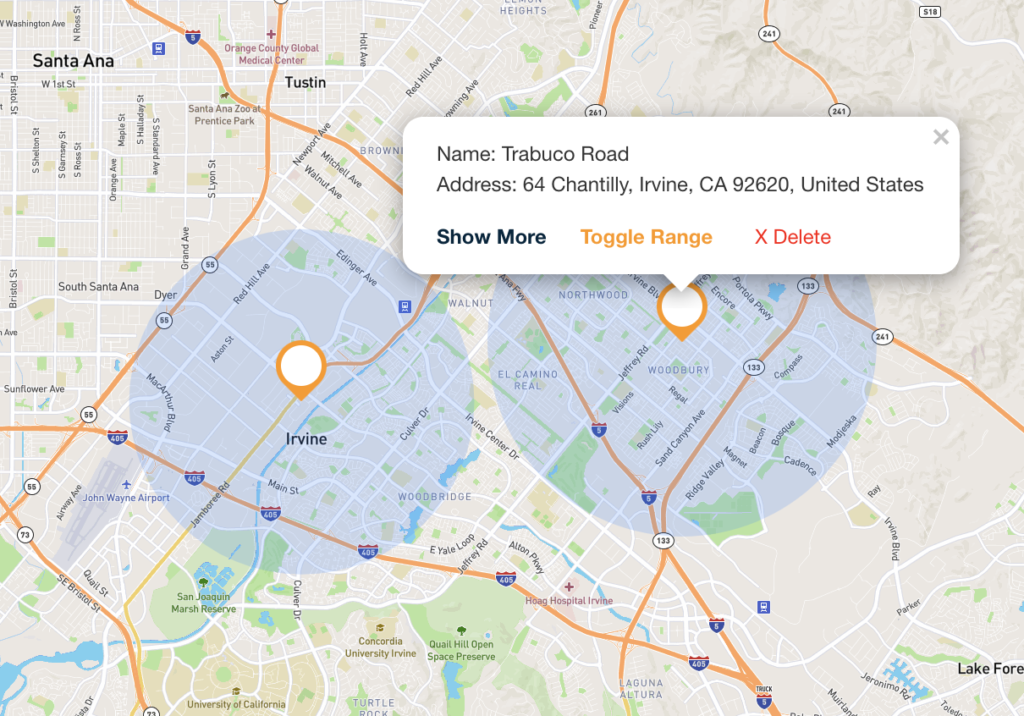A signboard bearing the logo of an international franchise like MacDonald’s or Starbucks is a familiar sight in many countries.
As you explore a city on, say, a sightseeing tour, you may come across several fast-food stores with the same name at different locations.
However, you don’t see two of them next to each other because each has its own franchise territory.
If you are in the middle of buying a franchise or even if you are just planning to do so, then you need to know as much as possible about franchise territories and how to determine your franchise territory.
What is franchise territory?
Starting a business can always be risky.
You always need to build a reputation and earn the trust of the customers.
By acquiring a franchise of a well-known company your customers are already waiting for you, but you should understand some basic franchising concepts to reduce the risk of business failure.
One of these concepts is franchise territory.
When a company sells you a franchise, there will be a contract that sets out the legal obligations you and the franchisor owe to each other to ensure a successful business for both of you.
The contract, which is commonly known as franchise agreement, also includes the specific area approved by the franchiser where the franchisee has the right to carry on franchise business.
This is commonly known as ‘franchise territory’.
Exclusive and non-exclusive territories
The common belief among franchisees is that when they buy a franchise the contract forbids any other franchisee from working in their territory.
And while that may be true sometimes, it does not have to be the case all the time.
Having the whole territory for yourself or sharing it with others depends on the nature of the territory and whether the territory is exclusive or non-exclusive.
Exclusive territory
Buying a franchise with exclusive territory means that you are the only franchisee who is allowed to work in that specific area.
When this happens, the contract forbids the franchisor from giving permissions to other franchisees to work in your territory and compete with you.
This type of territories protects the market from over-saturation or so-called ‘cannibalization’.
While having an exclusive territory prohibits other franchisees from working in the same territory and lets you have all the customers of the area, the most important thing is to determine the optimum territory size.
The territory needs to be large enough to help the franchisee to maximize his profits and small enough for the company to have the right number of franchisees throughout the region.
Of course, the exclusivity here only applies to the franchisees who work for the same company and this means that others can work next to you and compete with you without any legal issues.
Marketing in the exclusive territory will have low costs because you will not need to advertise outside your area as you only work in your territory.
But this also can mean that you will not be able to collaborate with other franchisees in marketing.

Non-exclusive territories
This type of territories are areas where a franchisee is allowed to work while the franchisor still permitting other franchisees to work there.
Usually, non-exclusive territories prohibit franchisees from working outside of their territory.
When working in a non-exclusive territory you must be certain that the area could sustain other franchisees and that the franchisor will not over-saturate the market with franchisees and dilute the business, thus pushing it toward failure.
Should I choose an exclusive territory?
At first, choosing exclusive territories might seem the best choice but you might need to think twice before making up your mind.
Sometimes sharing the same territories with others can be helpful to all franchisees as it may force them to work together and benefit from each other.
Exclusive territory and protected territory
While some people think that exclusivity and protection are two words with the same meaning that are used interchangeably, you need to know that there are some differences.
Having an exclusive territory means that your franchise must be the only source of the product you offer.
On the other hand, if the territory is only protected this means that other competitors from the same franchise can work in your territory throughout other channels of distribution like the internet for example.
Dividing territories
As we said, the main challenge of dividing franchise territories is to well distribute the franchisees in a city or country and ensure enough profits for the franchisees.
The conclusion here is that you need to determine your territory area smartly and wisely.
Of course, dividing the territory is not always easy and maybe sometimes complicated, but generally, there are the following ways to divide franchise territories.
Dividing the area into a few big territories
This method involves dividing the region into a small number of territories, each covering a vast area.
This method is surely a primitive one but it may be the only option when you are short of statistics and demographic information.
The problem with this method is that it makes it risky for the franchiser to increase the number of franchisees without having the necessary demographic data.
Dividing the area proactively
Using this strategy leads to more profits and smaller territories but it also requires more information.
When you divide the territories proactively you will be able to ensure that they include high-density areas and that they can cover the needs of the areas with lower densities as well.
This method is way better than the first one but it requires more data especially the data related to the customers and their lifestyles and preferences.
You also need to choose the optimum customer count per territory and you also need to take the geographical data into account because having mountains, major roads and country boundaries in your territory can change the way you should divide the territory.
Market considerations
The important thing that you need to understand and keep in mind is that every business has a specific thing to consider when determining the size of the territory.
The territory for a restaurant franchise cannot be the same territory for a gym franchise.
For example, when you are determining franchise territory for a children’s services business, the most important factor should be the number of families with kids and if you want to open a homecare business you should choose a place with a large elderly population.
The population
When determining franchise territory and the size of the territory, the population is a very important factor.
The territories’ size might increase to make sure there is enough population within.
Therefore, a territory in the city can be limited to a few blocks while one in a rural place maybe a few kilometers wide.
The demographic and psychographic characteristics
After taking the population in a certain area into consideration, it is recommended to study and research the demographic characteristics of the citizens like gender, income, age, and educational levels and then you should know their psychographic characteristics such as lifestyles and schedules.
This will help you get a good understanding of the needs and preferences of the potential customers in a specific area.
Last word
Keep in mind that every business is different from another.
Researching well and determining what your business need is key to a successful mapping and dividing territories for your franchise.
Understanding franchise territory is understanding your market, customers, and demographics of the city or country you are running your business in.



